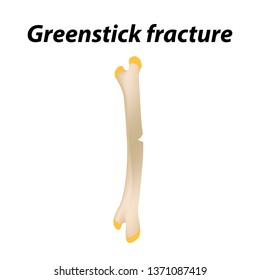Why Does Soft Tissue Therapy Pain? Recognizing The Refine
Why Does Soft Tissue Therapy Pain? Recognizing The Refine
Blog Article
Content Composed By-Holman Thuesen
When you undergo soft Tissue treatment, you may find it surprisingly uncomfortable. This discomfort emerges as stress is put on strained muscle mass and damaged cells, causing your pain receptors. While it can really feel traumatic in the minute, there's a factor behind this experience. Recognizing what occurs in your body throughout these treatments can assist you appreciate the process. So, what exactly is going on underneath the surface?
The Physiology of Discomfort Throughout Soft Tissue Treatment
When you undertake soft Tissue treatment, your body's action to pain is an intricate interaction of physiological processes. As the specialist uses pressure, your body activates discomfort receptors, sending signals to your brain. This causes the launch of neurotransmitters, such as substance P and glutamate, which intensify the sensation of pain.
Your muscular tissues may likewise tense up in feedback, additional making complex the experience. In addition, your body might launch endorphins, all-natural medicines that can assist alleviate some discomfort.
https://www.nnbw.com/news/2021/oct/29/sparks-chiropractic-clinic-donates-3785-casa-de-vi/ between these procedures can create an unique experience for every individual. Recognizing this physiological feedback assists you browse the sensations throughout therapy, allowing you to appreciate the equilibrium between pain and the capacity for recovery benefits.
The Duty of Pain in the Healing Refine
Although discomfort throughout soft Tissue therapy can really feel overwhelming, it plays a crucial role in the recovery procedure. When you experience discomfort, your body is signifying that it's working to repair broken tissues. https://www.google.com/maps/place/Return+to+Play+Institute,+LLC+(Miami)/@25.726017,-80.26406,17z/data=!3m1!4b1!4m6!3m5!1s0x88d9b7b4207e8303:0xb1493a6e0d5a272b!8m2!3d25.726017!4d-80.26406!16s%2Fg%2F11lf8185yp?hl=en&entry=ttu&g_ep=EgoyMDI0MTAwOS4wIKXMDSoASAFQAw%3D%3D helps boost blood circulation to the afflicted location, providing important nutrients and oxygen needed for healing.
In addition, pain can advertise the launch of endorphins, your body's all-natural painkillers, creating a feeling of alleviation post-treatment. Accepting this discomfort can aid you comprehend your body's limitations and motivate you to address underlying issues.
While it's uncomfortable currently, this process is necessary for long-lasting recovery and enhanced function. Acknowledging pain as an important part of healing can encourage you to stay dedicated to your therapy.
Tips for Managing Discomfort Throughout and After Therapy
Taking care of pain during and after soft Tissue therapy can considerably boost your general experience and recovery.
To begin, communicate freely with your therapist concerning your discomfort degrees; they can readjust strategies accordingly. Using deep breathing strategies can likewise aid you kick back and minimize pain.
Consider using ice to the treated area post-session to decrease swelling and numb soreness. Staying hydrated help in the recovery process, so consume alcohol lots of water.
Mild stretching and light activity after therapy can promote blood circulation and convenience rigidity. Last but not least, ensure you obtain ample remainder to permit your body to recover.
Implementing these suggestions can make your soft Tissue treatment much more convenient and satisfying.
Conclusion
Finally, while soft Tissue treatment can be unpleasant, it's vital to recognize that this discomfort plays an important duty in your recovery trip. By recognizing the physiological feedbacks at play, you can come close to the therapy with a much more positive attitude. Bear in mind, the initial discomfort typically gives way to alleviation as your body launches endorphins. Embrace the process, and do not be reluctant to make use of the tips for handling pain to enhance your experience and recuperation.
